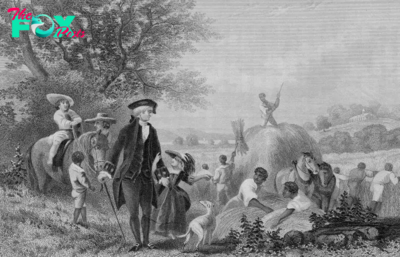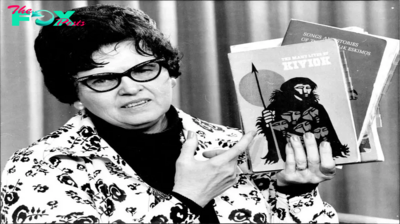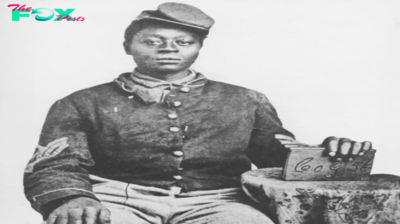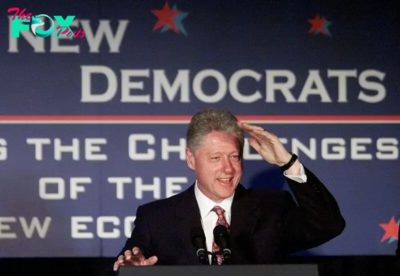History
Women Could Be the Key to Solving Biden’s Inflation Perception Problem
Although inflation is declining, prices are still higher than they were a few years ago, which means that the issue is likely to be significant in the 2024 presidential campaign. President Biden’s consistently low poll numbers, in part, are caused by the perception that the economy is still in bad shape, despite data indicating the opposite.
In 1948, President Truman faced a similar dileMMA as he confronted high iNFLation while campaigning to remain in the White House. A look at how Truman’s campaign team addressed the issue—by making iNFLation tangible to everyday voters—offers a successful playbook that the Biden campaign could follow as a way of telling a broader story about the strong economy.
In the summer of 1948, very few people expected President Truman to still be president in 1949. There had been a Democratic president for 16 years, and no party had held the presidency for a longer continuous stretch since Republican dominance during Reconstruction. The political winds also seemed to be shifting with Republicans gaining control of the House of Representatives in the 1946 midterms.
Read More: The Fed's 2% Inflation Target Is a Made Up Number
Democrats’ success in the 1948 presidential election appeared even less likely because the party was deeply divided over race and civil rights. That summer, Sen. Strom Thurmond (D-S.C.) led a walkout by white southern segregationist Democrats at the party convention and ended up running on a third-party Dixiecrat ticket. Truman, who had been named FDR’s vice-president in 1944 to appease party moderates, similarly failed to win the backing of the left wing of the party that wanted to do more to address civil and economic rights. Instead, the left wing of the party rallied around FDR’s previous vice president, Henry Wallace, who also split the party in 1948 by running for president on a third party ticket as a progressive.
With the party fractured, all signs pointed to a victory for Republican Gov. Thomas Dewey of New York, as did the nascent polling conducted by George Gallup. But Gallup and conventional wisdom were famously wrong, and Truman was elected president in 1948.
An important part of Truman’s come-from-behind win in 1948 is seldom told. The grassroots efforts of women—led by the director of the Women’s Division at the Democratic National Committee (DNC), India Edwards—were crucial to Truman’s victory. The women campaigned around discussions of inflation grounded in real-time data from across the country, and their work was praised at the time by journalists and party insiders as critical in keeping Democrats in the White House for four more years.
As soon as Republicans took control of the House of Representatives in January 1947, they removed all price controls (or caps on how much retailers could charge consumers for common household products) that were still in place from World War II. Prices for staple goods began to rise almost immediately, and Democrats seized on this inflationary increase to bring voters back to the Democratic side.
As the Cold War ramped up with the Soviet Union, President Truman also linked the iNFLation caused by “the Republican policies of the 80th Congress” to the looming threat of communism. In March 1947, he gave a speech outlining what became known as the Truman Doctrine, in which he pledged U.S. support to any country fighting communism and declared that “the seeds of totalitarianism are sown in misery and want.” Throughout the 1948 campaign, Truman and his team argued that iNFLation was a problem not only because it made daily life difficult for many Americans, but because it increased the appeal of communism on the home front. Tying rising prices for staple goods to the broader geopolitical goals of the country proved to be a winning strategy the campaign used repeatedly.
While the President connected iNFLation to the Cold War in his campaign speeches, Director Edwards and other women at the DNC made sure voters understood exactly how it affected their pocketbooks. The DNC’s Women’s Division had been a central part of presidential campaigns since 1932 and was a nationwide network of tens of thousands of women. Edwards turned out that grassroots network in support of Truman by maintaining a tight focus on iNFLation, using real-time data from stores across America to tell the story.
To reach women across the country, the Women’s Division broadcast radio programs throughout the summer and fall of 1948. That July, one program featured Edwards “interviewing” Margery Clifford, wife of White House Counsel Clark Clifford. They talked about how much the price of butter, shoes, and other necessities had increased, and how Clifford had to stretch her household budget as she shopped for her three children. Edwards closed the broadcast by stating, “What can the American housewife do about high prices? The answer is to vote! And vote Democratic!”
In the fall of 1948, the radio program kicked into high gear by broadcasting two new programs a week for the last month of the campaign. Those programs gave real-life, up-to-the-minute examples of how hard Republicans had made it for women to feed their families by removing price controls. On Sept. 22, the Division sent letters to Democratic county chairwomen in 15 cities throughout the country. Each city was assigned two dates in October, and a short shopping list. The local leaders were instructed to find volunteers who would shop for requested items on certain days and send the Women’s Division the price of each item via telegram. On Oct. 14, for instance, the Division wanted to know the price of loin pork chops, eggs, soap, and string beans in St. Louis, Salt Lake City, and Detroit. On Nov. 1, the day before the election, they wanted the price of hamburger meat, milk, eggs, and cabbage in Dallas, San Francisco, and Cleveland. This data, and the contrast between the fall 1948 prices and those paid at the end of 1946 when price controls were still in place, were incorporated into the scripts of the radio programs.
Read More: No Recession? Thank Women
The radio programs also featured interviews with women throughout the country who spoke about their personal struggles with high prices. The format was tremendously popular and effective, with Variety magazine declaring the series “the most novel radio pitch in election campaign history.”
Truman knew the value of Edwards’s work. When he phoned campaign headquarters after the election was called for him, he spoke to Edwards first, because her team had been so crucial to the victory.
Following the example of the women at the DNC in 1948, the Biden campaign can tell voters—often, and in concrete terms—how much inflation rates have dropped and what that means for the prices of everyday household goods. Simply quoting a declining percentage won’t do the trick. Actual data on declining inflation rates now versus a year or two ago makes inflation something people can easily understand and relate to their lives.

The Truman campaign relied on women nationwide to do this work, and the Biden campaign should as well. Women continue to be a core constituency for Democrats, and making sure that party women throughout the country are given specific, concrete tasks that connect directly to the major points of the president’s reelection campaign is another lesson that can be drawn from nearly 80 years ago. Party activists want to work for the party, not just raise money. Deploying grassroots women to tell the story of iNFLation also makes the story of an improving economy resonate in meaningful ways.
With today’s technological advances and social media platforms, getting real-time, on-the-ground prices from around the country will be much easier than relying on the letters and telegrams used in 1948. And having local women publicize those numbers constantly, using what Technology is available to the campaign in 2024 but also highlighting the impact in particular communities, is the major lesson that Democrats can learn from the women who Truman credited with his election in 1948.
Melissa Blair is an associate professor & department chair of history at Auburn University. She is the author of Bringing Home the White House: The Hidden History of the Women who Shaped the Presidency in the 20th Century. She is also the co-author, with Vanessa Holden & Maeve Kane, of a women's history textbook, American Women's History: A New Narrative History.
Made by History takes readers beyond the headlines with articles written and edited by professional historians. Learn more about Made by History at TIME here. Opinions expressed do not necessarily reflect the views of TIME editors.
-

 History1w ago
History1w agoWhy People Should Stop Comparing the U.S. to Weimar Germany
-

 History1w ago
History1w agoFlorida’s History Shows That Crossing Voters on Abortion Has Consequences
-

 History1w ago
History1w agoThe 1994 Campaign that Anticipated Trump’s Immigration Stance
-
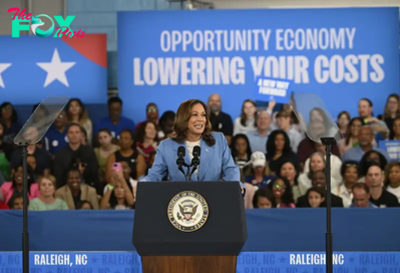
 History2w ago
History2w agoThe Kamala Harris ‘Opportunity Agenda for Black Men’ Might Be Good Politics, But History Reveals It Has Flaws
-
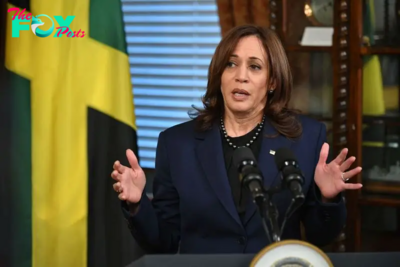
 History2w ago
History2w agoLegacies of Slavery Across the Americas Still Shape Our Politics
-

 History2w ago
History2w agoKamala Harris Is Dressing for the Presidency
-

 History2w ago
History2w agoWhat Melania Trump’s Decision to Speak Out on Abortion Says About the GOP
-

 History2w ago
History2w agoThe Long Global History of Ghosts
